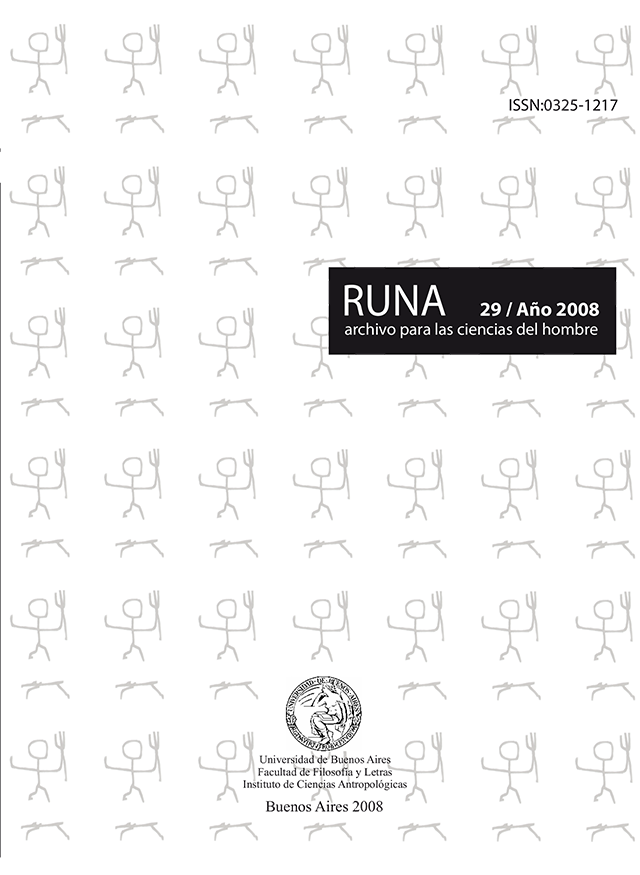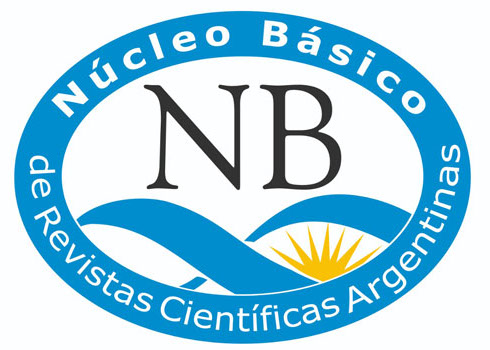Nuevos resultados del estudio del sitio Ajej I: un aporte a la variabilidad de estrategias de los canoeros fueguinos
Abstract
The study of the archaeological site Ajej I dated between 1300 and 1400 BP isthe result of a rescue excavation carried out in the northern coast of the BeagleChannel, an area peopled by sea littoral hunter-gatherers since the seventhmillennium BP. The analyses results pinpoint that the site is characterized by: a) alow redundant occupation; b) a selectivity of the pinnipeds as preys; c) a differentialdistribution of their anatomical parts; and d) a low diversity of activities carried withthe lithic instruments. Besides, these studies provided an early date to the presenceof bows and arrows in such an austral region. Results enable to discuss on thevariability of the strategies carried on by those sea nomads.Downloads

Runa, archivos para las ciencias is a publication of the Instituto de Ciencias Antropológicas, Facultad de Filosofía y Letras, Universidad de Buenos Aires and is distributed under a Creative Commons Attribution 4.0 International License.
Runa maintains its commitment to the policies of Open Access to scientific information, considering that both scientific publications and publicly funded research should circulate on the Internet freely, free of charge and without restrictions.
The contents and opinions expressed in published articles are the sole responsibility of their authors.



















